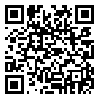Volume 5, Issue 1 (2025)
jpt 2025, 5(1): 97-108 |
Back to browse issues page
Download citation:
BibTeX | RIS | EndNote | Medlars | ProCite | Reference Manager | RefWorks
Send citation to:



BibTeX | RIS | EndNote | Medlars | ProCite | Reference Manager | RefWorks
Send citation to:
Hosseini Sangchal A. Attributing Quiddity to Existence in Dawani’s Opinion and Objections of Ghiyath al-Din and Sadr-al-Din Dashtaki. jpt 2025; 5 (1) :97-108
URL: http://jpt.modares.ac.ir/article-34-79511-en.html
URL: http://jpt.modares.ac.ir/article-34-79511-en.html
Department of Islamic Philosophy, Faculty of Theology and Islamic Studies, Tehran University, Tehran, Iran
Abstract: (591 Views)
Jalal al-Din Dawani tries with his theory of Predication and his attribution theory and referent of Predication, and his special analysis of the Rule of Presupposition solves this problem, which is the problem of attributing quiddity to existence. Dawani has two analyses about whetherness, such as "There is Michael". According to Dawani, in the second analysis of "There is Michael," the problem of attributing quiddity to existence is solved because the second analysis of "There is Michael" means" Michael has a connection to existence," not" Michael has existence". According to Dawani, in the first analysis of "There is Michael," the problem of attributing quiddity to existence can be solved by distinguishing between a container that quiddity attributes to existence and a container that the attributing quiddity to existence is there. According to Dawani, existence is not attributed to quiddity outside, and existence is not attributed to quiddity in the mind. Still, existence is attributed to quiddity in the thing in itself.
Article Type: Original Research |
Subject:
Metaphysics (Islamic)
Received: 2025/01/20 | Accepted: 2025/03/3 | Published: 2025/03/17
Received: 2025/01/20 | Accepted: 2025/03/3 | Published: 2025/03/17
References
1. Bahmanyar M (1996). AL-TAHSIL (Volume 2). Tehran: University of Tehran. [Arabic] [Link]
2. Dashtaki QDM (ND). TAJRIDAT AL-GHAVASHI WA TASHEIDAT AL-HAVASHI. Hamedan: Garb Hamedan School. [Arabic] [Link]
3. Dashtaki SDM (NDc). The old commentary on SHARH TAJRĪD AL-KALĀM. Astan Quds Razavi. [Arabic] [Link]
4. Dashtaki SDM (NDb). The new commentary on SHARH TAJRĪD AL-KALĀM. MADRESA SEPAHSALAR. [Arabic] [Link]
5. Dawani JD (2002). SABUO RASAEIL. Tehran: MIRASE MAKTOB. [Arabic] [Link]
6. Dawani JD (NDa). The new commentary on SHARH TAJRĪD AL-KALĀM. Manuscript, Islamic Parliament Library. No. 1998. [Arabic] [Link]
7. Dawani JD (NDb). The new commentary on SHARH TAJRĪD AL-KALĀM. Manuscript, Islamic Parliament Library. No. 10146. [Arabic] [Link]
8. Ghoshji A (2014). SHARH TAJRID AL-AGAID (Volume 1). Qom: Raeed. [Arabic] [Link]
9. Hilli HY (2009). KASHF AL MURAD (Volume 12). Qom: MOASESEH NASHR AL-ISLAMI. [Arabic] [Link]
10. Hosseini Sangchal A (2022). The rule of presupposition in Davani's intellectual organization. The Quarterly Journal of History of Islamic Philosophy. 1(1):76-102. [Persian] [Link]
11. Ibn Sina (1983). KITAB AL-SHIFA': Theology (Volume 3). Qom: AYATOLLAH AL-AZMI MARASHI AL-NAJAFI Library. [Arabic] [Link]
12. Ibn Sina (1996). Remarks and admonitions. Qom: NASHR AL-BALAGEH. [Arabic] [Link]
13. Razi FD (2005). SHARH AL-ISHARAT WA TANBIHAT (Volume 2). Tehran: ANJOMAN ASAR FARHANGI. [Arabic] [Link]
14. Tusi ND (1996). SHARH AL-ISHARAT WA TANBIHAT (Volume 2). Qom: NASHR AL-BALAGEH. [Arabic] [Link]
| Rights and permissions | |
 |
This work is licensed under a Creative Commons Attribution-NonCommercial 4.0 International License. |






